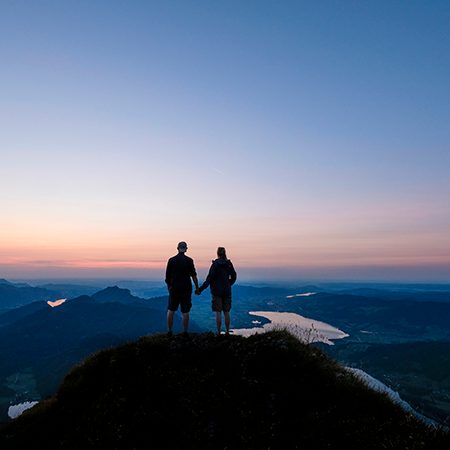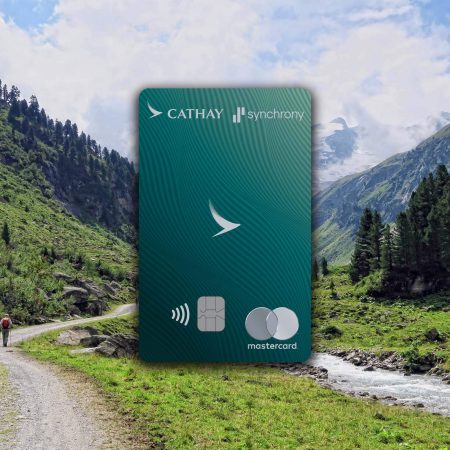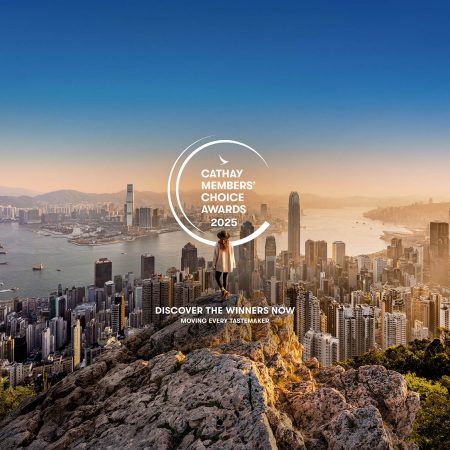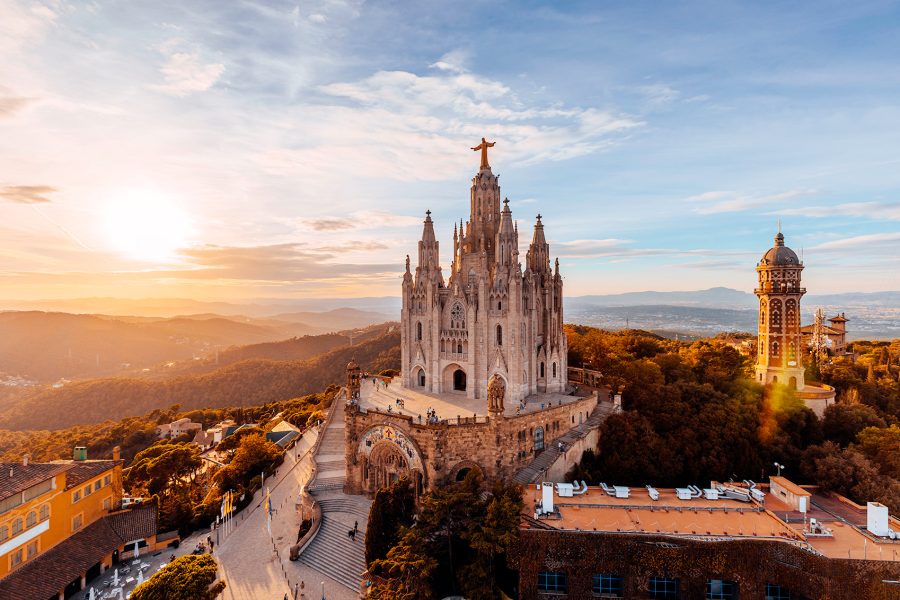From its extensive cultural and artistic heritage to its beaches, gastronomy and vibrant nightlife, Barcelona boasts a great many attractions around it. From your base in the city, you can easily enter protected natural landscapes, visit fairy-tale villages and mountains of salt or understand the inner universe through such outstanding artists as Salvador Dalí.
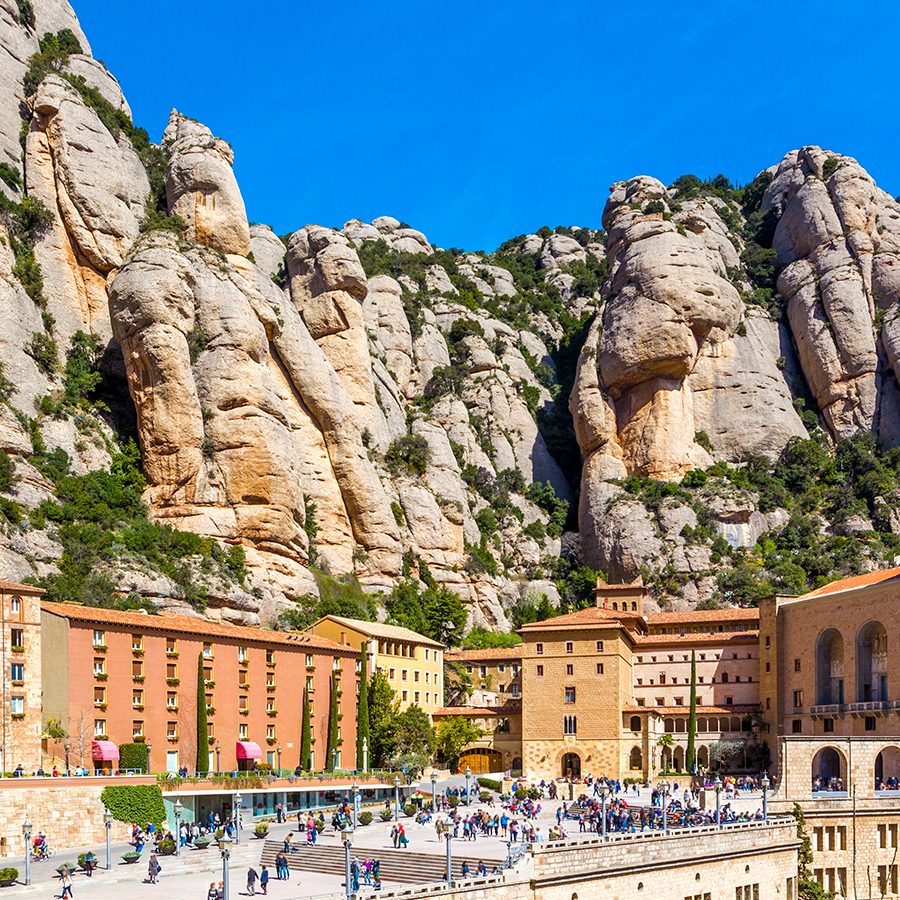
Credit: LARISA SHPINEVA/Getty Images
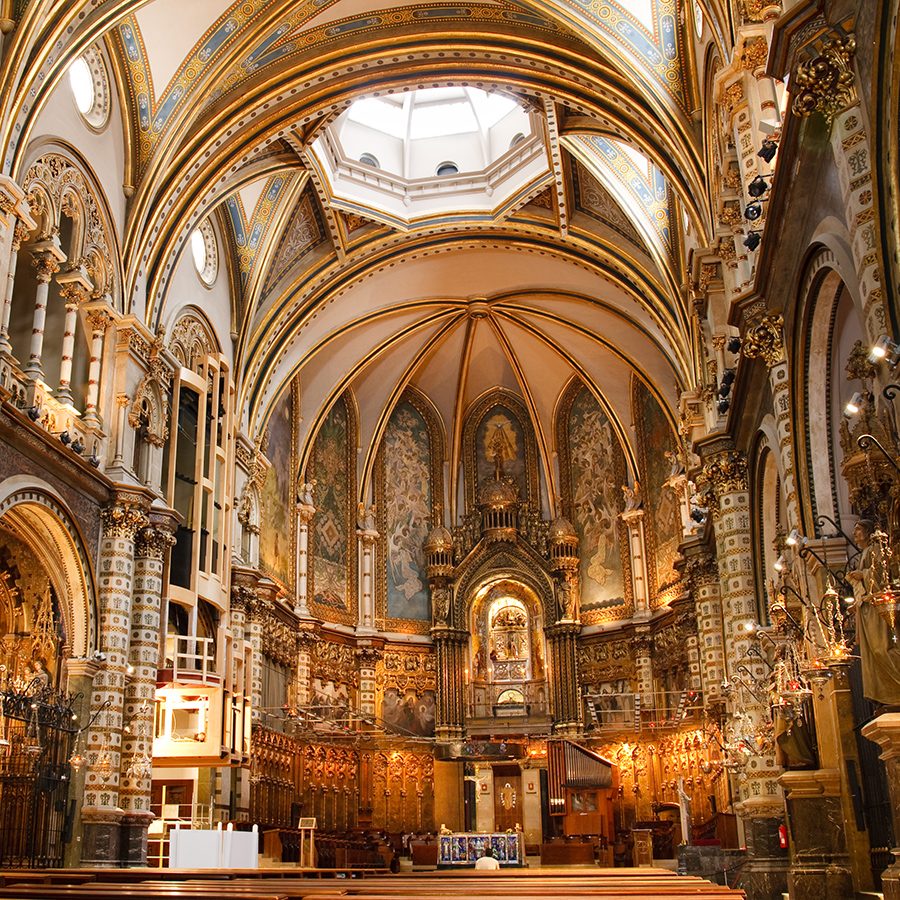
Credit: Patrick Poendl/Getty Images
Montserrat
With such descriptive names as “The Monkey”, “The Elephant” and “The Pregnant Woman”, the large rock formations that crown the mountain range of Montserrat make this place (which lies just 30 kilometres from Barcelona) one of the most picturesque landscapes in the region. Its highest peak, Sant Jeroni, rises 1,236 metres above sea level. Board the historical Aeri de Montserrat cable car to ascend to the summit, or hike along one of the many routes that start from the station.
On the mountain, at 720 metres, is the Monastery of Santa María de Montserrat : a Benedictine abbey founded in the 11th century to honour the patroness saint of Catalonia. A rack railway allows you to visit its 16th-century church, its library – which houses over 380,000 monographs and 1,500 ancient papyri and parchments. Be sure to also stop by its museum to admire a collection of paintings by masters like Caravaggio, Monet, Pissarro, Sisley, Picasso and Dalí.

Credit: Ross Durant Photography/Getty Images
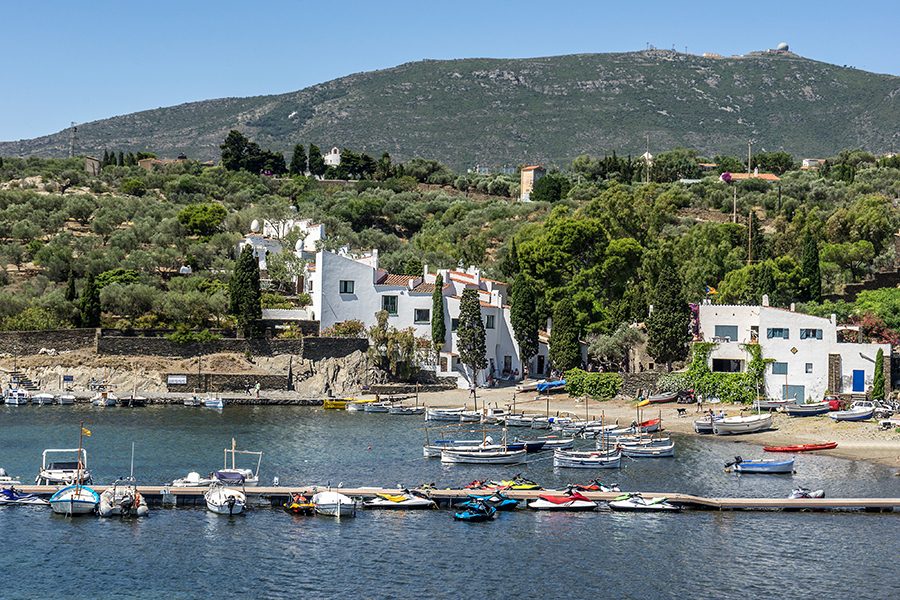
Credit: Gordon Bell Photography/Getty Images
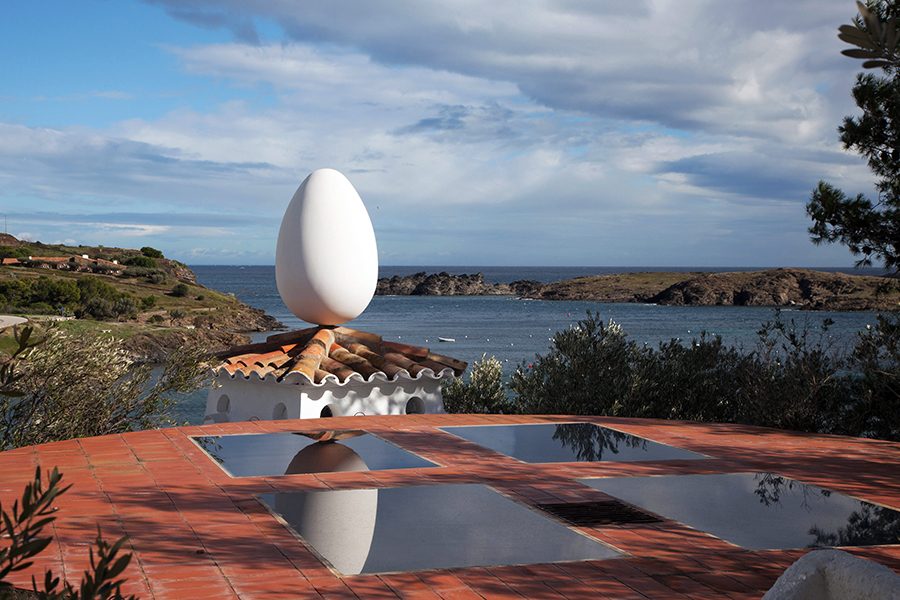
Credit: Andia/Getty Images
Dalinian Triangle
Just over an hour and a half from Barcelona is Figueres, the city in which Salvador Dalí was born in 1904. His house , now a museum, showcases his first experiences and is part of a sightseeing route that also includes the church he was baptised in, Sant Pere, as well as the old theatre that he turned into a museum. The latter now houses the world’s largest collection of works by the Surrealist painter.
Along with two other towns, Púbol and Portlligat, Figueres forms one of the sides of the so-called “Dalinian Triangle ”. Dalí built a castle in Púbol for his wife, Gala, and lived and worked until 1982 in Portlligat, close to the fishing municipality of Cadaqués, one of the most beautiful destinations on the Costa Brava.
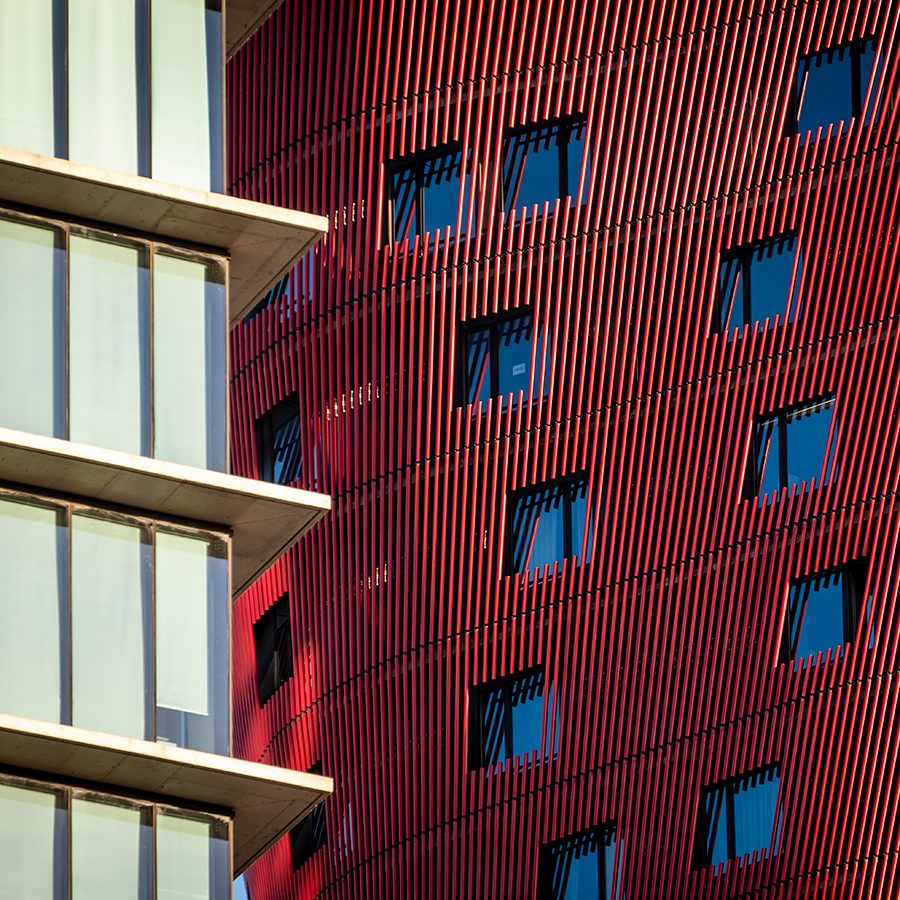
Credit: Carlos Sanchez Pereyra/Getty Images
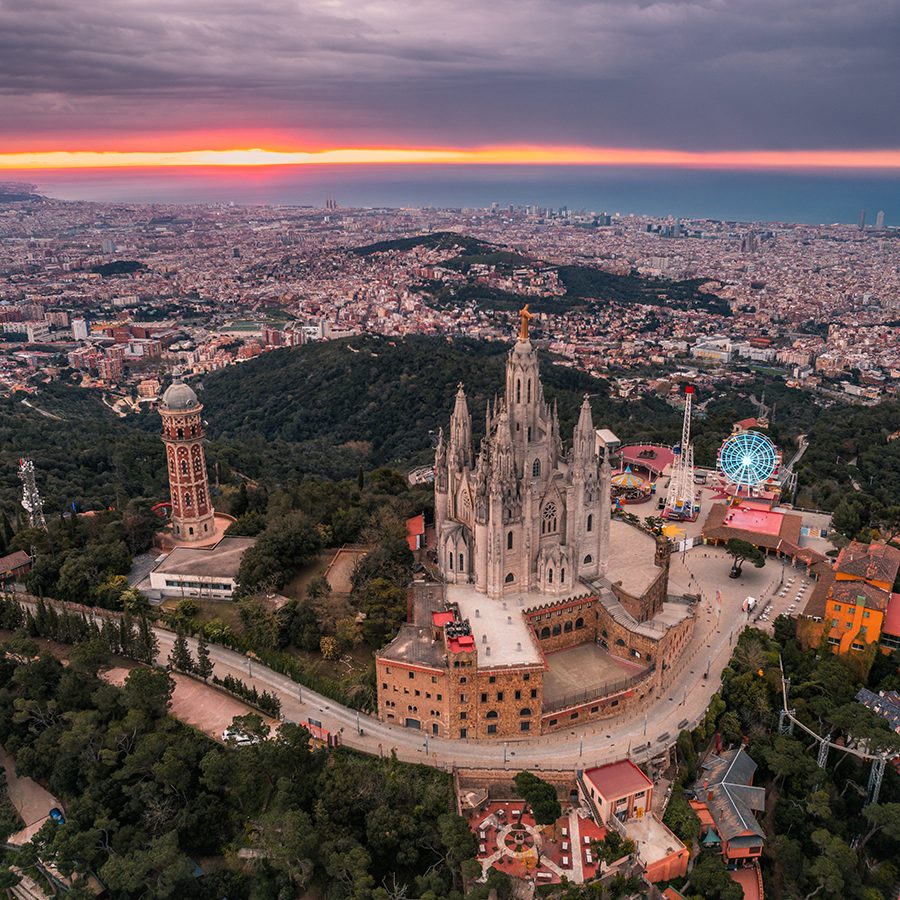
Credit: Pol Albarrán/Getty Images
Carretera de las Aigües
This 10-kilometre road in the Sierra de Collserola mountains offers stunning views of the Barcelona skyline in its entire length all the way to the sea. Due to its proximity to Barcelona – it’s very easy to reach the starting point by going up Avenida del Tibidabo – a green space beloved by Barcelona residents. Instead of walking, some people enjoy cycling along the road, which follows now-abandoned water pipes that used to supply the city. Moreover, Carretera de las Aigües is part of the so-called Ronda Verda , a perfectly signposted circular circuit of 72 kilometres of cycling lanes that connects the city with surrounding natural parks and towns like Llobregat.

Credit: Manel Subirats/Getty Images
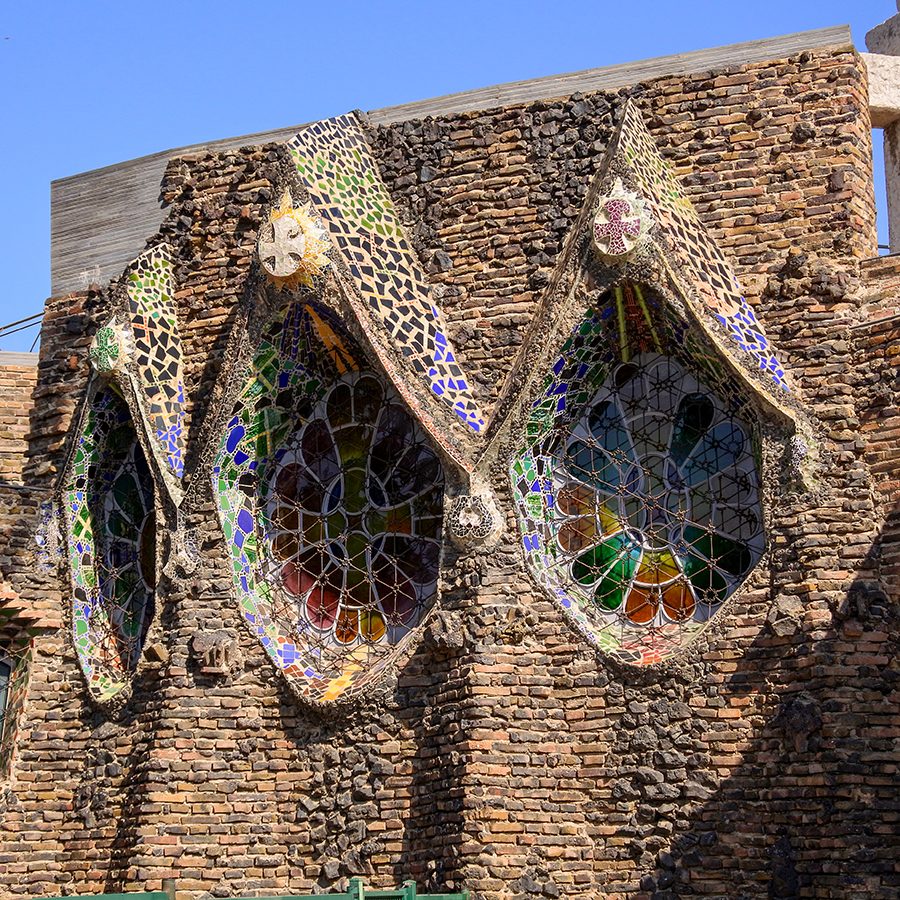
Credit: Francesc Domènech/Getty Images
Colonia Güell and Gaudí’s Crypt
One of Spain’s most impressive sites of Modernist architectural works can be found at Colonia Güell , located just a 20-minute train ride from Barcelona in Santa Coloma de Cervelló. The colony was originally commissioned by the businessman Eusebi Güell to house workers of his textile mills, but when designer and artist Antoni Gaudí took charge of planning, he developed an urban nucleus with cultural spaces in the area, including a school, theatre, inn and church.
Mr. Güell, a great patron of the Modernist architect, placed no limits on the spending or construction times for the church – of which only the crypt ended up being built. This crypt is significant because it served as a testing ground for Gaudí’s experimental and innovative architectural systems which he later implemented in the design of the Sagrada Familia.
When you purchase the entrance ticket , it is possible to include the train fare to and from the Plaza de España in the centre of Barcelona.

Credit: Carlos Sanchez Pereyrah/Getty Images

Credit: Cultura RM Exclusive or Quim Roser/Getty Images
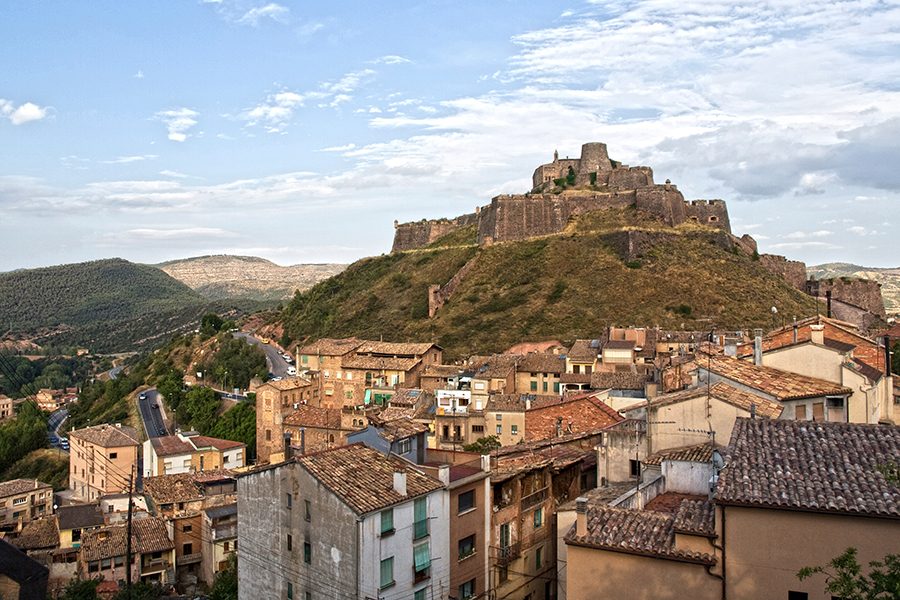
Credit: SOMATUSCANI/Getty Images
Cardona
Visiting Cardona, near the Bagés region just an hour from Barcelona, will take you on a journey back to the Middle Ages. This beautiful area has managed to maintain its perfectly preserved mediaeval old town, filled with large mansions once belonging to nobles and a castle built in 886CE as the residence of the dukes of Cardona. Within the castle walls is the Romanesque church of Sant Vicenç and the Minyona tower, standing at a height of 15 metres. The town’s development was in large thanks to the production of salt, and to this day, the mineral that lifted the impressive mountain 120 metres high continues to emerge from the town’s snow mine.
A tour of its interior takes place in galleries located at a depth of 86 metres, dotted with stalactites and stalagmites.
More inspiration
Barcelona travel information
- China – the Chinese Mainland, Hong Kong SAR, Macao SAR and Taiwan Region
- Hong Kong SAR - English
- Chinese Mainland (China) - English
- Taiwan, China - English
- 香港特別行政區 - 繁體中文
- 中国內地 - 简体中文
- 中國台灣 - 繁體中文
- Africa
- South Africa - English
- Americas
- Canada - English
- Canada - Français
- United States - English
- Asia
- Bangladesh - English
- Korea - English
- Singapore - English
- Cambodia - English
- 한국 - 한국어
- Sri Lanka - English
- India - English
- Malaysia - English
- Thailand - English
- Indonesia - English
- Maldives - English
- ประเทศไทย - ภาษาไทย
- Indonesia - Bahasa Indonesia
- Myanmar - English
- Vietnam - English
- Japan - English
- Nepal - English
- Việt Nam - tiếng Việt
- 日本 - 日本語
- Philippines - English
- Australasia
- Australia - English
- New Zealand - English
